In this article, let us take you behind the scenes of Vietnam Pangasius farming, where tradition meets innovation in the most fascinating way and transforms this kind of fish into one of Vietnam’s most valuable exports.
Have you ever wondered how that white, flaky pangasius fillet made its way to your restaurant menu or supermarket freezer? The journey is more interesting than you might think, and understanding it could be the difference between a good business decision and a great one.
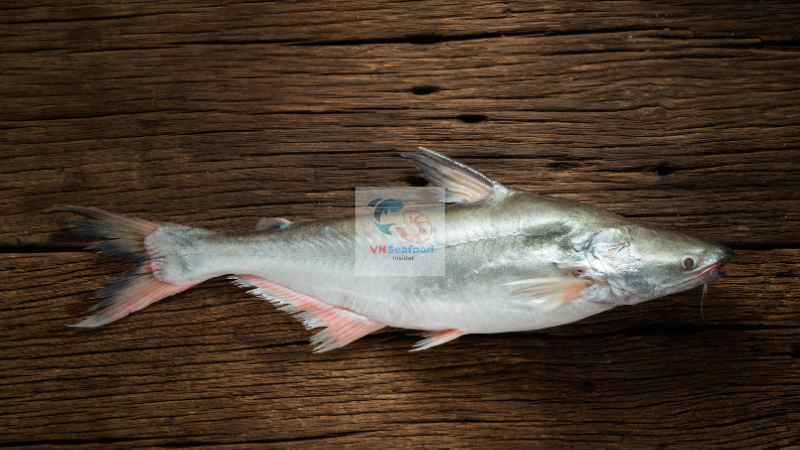
Outline
ToggleThe Rise of Vietnam Pangasius Farming on the Global Stage
Vietnam pangasius has become something of a phenomenon in the global seafood market. What started as small-scale farming operations along the Mekong Delta has exploded into a massive industry that accounts for roughly 50-55% of the world’s pangasius production.
In 2023 alone, Vietnam produced approximately 1.6 million tons of pangasius, while the total global production hovered around 3.13 million tons. The remaining 40-45% comes primarily from countries like India, Indonesia, Bangladesh, Malaysia, and China. But here’s the thing – despite others trying to replicate Vietnam’s success, there’s something special about Vietnamese pangasius that competitors just can’t seem to match.
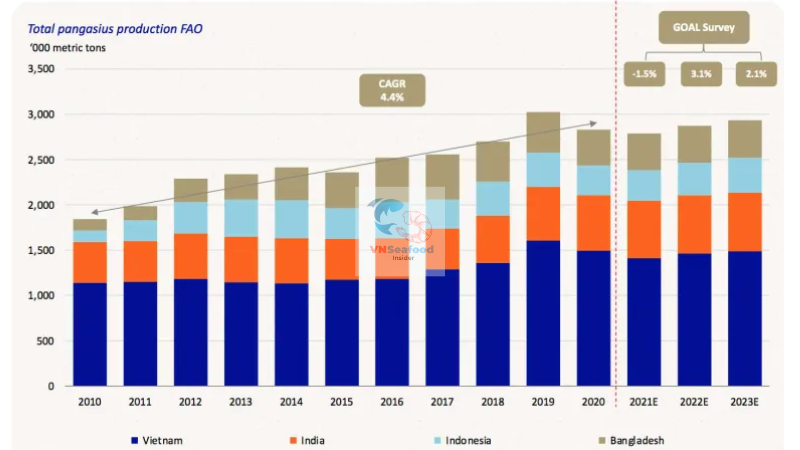
Why Vietnam Dominates the Pangasius Market
It’s not just about experience or scale, though Vietnam certainly has both. The secret lies in the waters of the Mekong Delta itself. This mighty river – the third longest in Asia at nearly 5,000 kilometers – flows through six countries before reaching Vietnam, where it splits into nine branches (earning it the nickname “Nine Dragon River”) before emptying into the sea.
This unique geography creates continuous flowing water that gives Vietnamese pangasius its signature white meat. Pangasius farmed elsewhere typically develops yellowish flesh and, according to many buyers, simply doesn’t taste as good. Mother Nature has given Vietnam a natural advantage that’s tough to beat.
Understanding the Complete Pangasius Life Cycle
When you’re importing pangasius, knowing the full farming process helps you understand what you’re really paying for. Let me walk you through the journey from egg to export.
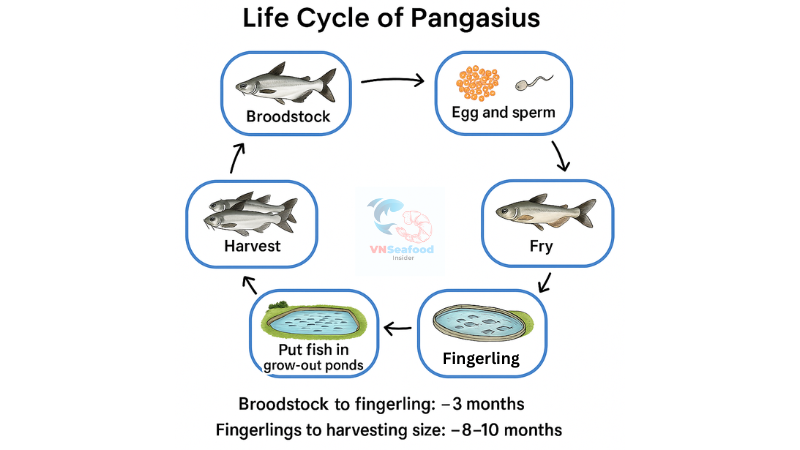
From Broodstock to Fingerling: The First Critical Steps
The life of a pangasius begins with carefully selected broodstock – mature fish weighing up to 5-6 kilograms. Most quality broodstock in Vietnam comes from RIA 2 (Research Institute for Aquaculture No.2), ensuring genetic quality and disease resistance.
Here’s a fascinating detail: a female pangasius weighing 4kg can produce about 0.4kg of eggs – that’s a 10% ratio. However, the survival rate from larvae to fingerlings is only 10-15%. This is why the hatchery phase is so critical to the industry.
The transformation from broodstock to fingerling-sized fish (25-30 grams) takes approximately three months in specialized hatcheries. These fingerlings are then ready for the main grow-out phase.
The Grow-Out Phase: Turning Fingerlings into Market-Ready Fish
The fingerlings are transferred to growing ponds throughout the Mekong Delta region, where they’ll spend the next 8-10 months developing into harvest-sized fish. During this period, farmers maintain stocking densities below 60 fish per square meter to ensure proper growth.
With good management, the survival rate during this phase reaches 60-80% – significantly higher than the hatchery phase but still showing how challenging pangasius farming can be. The entire life cycle, from egg to harvest, takes about one year.
The Science Behind Feeding Pangasius
One thing that surprises many seafood importers is learning that pangasius is essentially a vegetarian fish. This makes it one of the most sustainable protein sources on the planet.
A Largely Plant-Based Diet
The typical pangasius feed formula in Vietnam Pangasius farming consists primarily of:
- Cereal products (mainly rice bran)
- Soybean meal (often imported from Argentina)
- Cassava (tapioca)
- Vegetable oils
- Amino acid and vitamin supplements
- A small amount (about 3%) of fishmeal
This largely plant-based diet gives pangasius an impressive Food Conversion Ratio (FCR) of approximately 1.55 – much lower than chicken, beef, or even many other farmed fish species. In practical terms, this means less resources are needed to produce each kilogram of protein.
The Two-Stage Feeding Strategy
Vietnamese farmers typically employ a two-stage feeding approach. In the first stage, while the fish are developing their frame and length, they receive feed with higher protein content (around 28%). Once they reach about 100 grams, farmers switch to a formula with slightly lower protein (26%) but higher carbohydrates to promote weight gain.
This feeding regimen typically happens once or twice daily, with farmers carefully monitoring fish behavior to avoid overfeeding. Feed represents 60-70% of the total farming cost, so efficient feeding is essential to profitability.
See more: Vietnam Pangasius Market Trends and Forecast 2025
Water Management in Vietnam Pangasius farming: The Unsung Hero of Quality Pangasius
If there’s one thing I’ve learned from visiting countless pangasius farms across the Mekong Delta, it’s that water quality management separates the good farms from the great ones.
During the growing period, professional farmers regularly monitor critical parameters like dissolved oxygen (DO), pH levels, and water clarity. More importantly, they implement systematic sludge removal protocols to maintain a healthy environment for the fish.
This attention to water quality in Vietnam Pangasius farming isn’t just about fish health – it directly impacts the flavor and texture of the final product. When you taste that clean, mild flavor that pangasius is known for, you’re tasting the result of careful water management.
Harvesting and Processing: Where Value Is Created
The most exciting part of the pangasius story happens after harvesting, when the fish are transformed into the products you’ll eventually import.
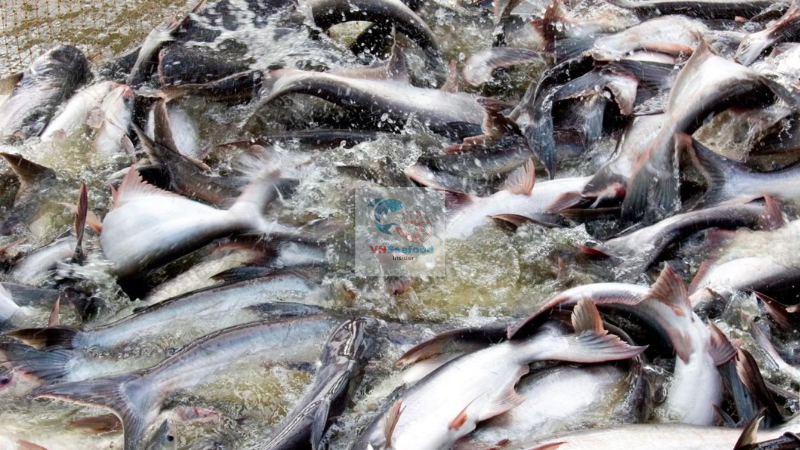
The Remarkable Yield Factor
One of the most important numbers for importers to understand is the processing yield. For pangasius fillets, this typically ranges between 31-33% of the whole fish weight (no soaking). This might seem low compared to some other species, but Vietnamese processors have turned this challenge into an opportunity.
Zero Waste: Utilizing Every Part of the Fish
The best processing plants in Vietnam operate on a zero-waste principle, finding value in every part of the pangasius:
- Fillets (the primary product)
- Dark or red meat trimmings (used for local products like fish balls)
- Skin (processed into gelatin and collagen)
- Heads and backbones (converted to fishmeal and oil)
- Fatty belly parts (rendered for oil extraction)
This comprehensive utilization helps keep costs competitive while maximizing sustainability – a win-win approach that has become standard practice in the industry.
Certification: Your Assurance of Quality and Sustainability
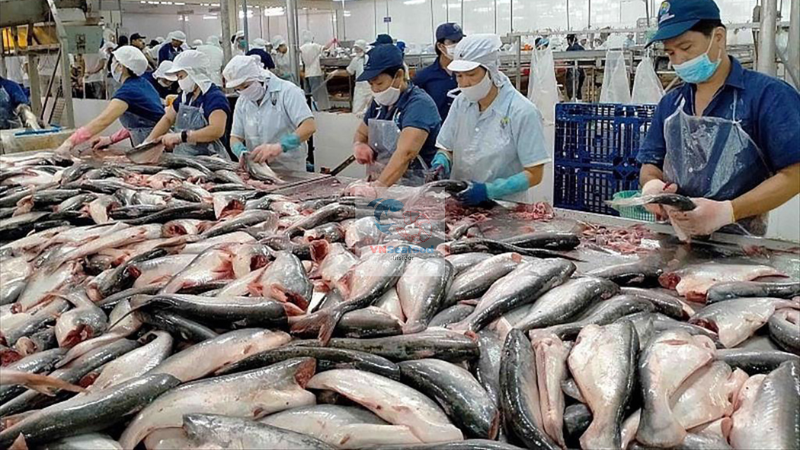
When buying Vietnamese pangasius, certification matters. The top processors in Vietnam have invested heavily in international certifications including:
- BRC (British Retail Consortium) Global Standard
- ISO certifications (various standards)
- ASC (Aquaculture Stewardship Council)
- BAP (Best Aquaculture Practices)
These certifications aren’t just paper – they represent real commitments of Vietnam Pangasius farming and processing to food safety, environmental sustainability, social responsibility, and animal welfare. As an importer, they give you confidence that you’re partnering with suppliers who meet global standards.
Read more: Pangasius Quality Control – How to Avoid Quality Issues When Importing Pangasius
Why Vietnam Pangasius Deserves Its Place in Global Markets
Despite occasional negative press over the years, Vietnam pangasius has earned its position as one of the top five most consumed fish worldwide. And it’s not hard to see why.
Pangasius offers an affordable, versatile protein with mild flavor that works in countless applications. Its farming has minimal environmental impact compared to many animal proteins. And with Vietnam’s continued investments in quality control and sustainability, the future looks promising.
See more: Pangasius Fish Price Faces Pressure as U.S. Tariffs Hit Vietnam’s Major Processors
What Importers Should Look For?
As VNSeafoodInsider, I’ve seen the best and worst of this industry. My advice to you as an importer is to look beyond price alone. The lowest price often comes with hidden costs – inconsistent quality, delivery delays, or sustainability concerns.
Instead, build relationships with suppliers who demonstrate transparency about their farming and processing methods, hold relevant certifications, and show a commitment to continuous improvement. These partners will help you build a pangasius import program that delivers consistent value to your customers.
The muddy waters of the Mekong may hide their secrets well, but now you have the insider knowledge to navigate the Vietnam Pangasius farming and business with confidence. Happy importing!
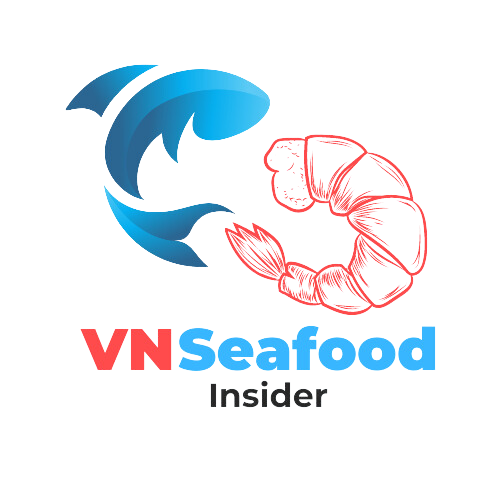
Pingback: Vietnam Pangasius Export Reveal Strong Performance in H1.2025
Pingback: Brazil Pangasius Market Surge 64% Drives Vietnam Fish Export
Pingback: Feed Cost Impact on Fish and Shrimp Production in Vietnam
Pingback: Vietnam Pangasius Fish Price & Market Update Early Q4 2025
Pingback: Vietnamese Whitefish Alternatives: Opportunity in EU's Seafood Shortage Crisis
Pingback: Vietnamese Pangasius Prices Update: Fingerling Shortage Impacts